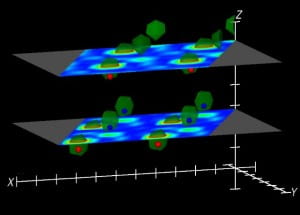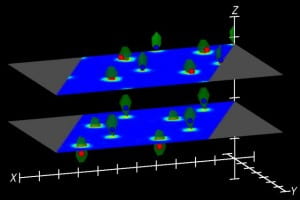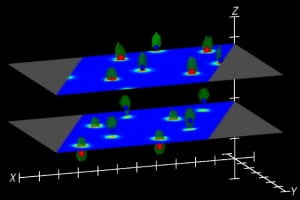Direct reconstruction of the surface electron density
of a vacancy-buckling model of the GaAs(111) (2×2) surface
from simulated surface X-Ray diffraction data.
R. Harder and D. K. Saldin
The images below illustrate some yet unpublished work (in collaboration with H. Vogler and W. Moritz of the University of Munich) towards the development of a direct method for surface X-ray diffraction. The starting point is a set of simulated surface X-ray diffraction data from the accepted vacancy-buckling model of the (2×2) GaAs(111) surface. These simulations were performed by means of the ROD computer program of Dr. Elias Vlieg. The simulated data consisted of a set of crystal truncation rods (CTRs) and superstructure rods. The only other information given to the algorithm was the known bulk structure of GaAs.
The algorithm generates the electron density of the outermost two double-layers. We depict this electron density by green isosurfaces of constant density. The red dots mark the locations of the surface As atoms in the assumed in the vacancy-buckling model, and the blue dots the corresponding Ga atom positions.
(Click on any image to see a larger version)



